With an eye on outcomes that range from better patient care and improved early detection to equity in research and increased use of new technologies like big data, the National Cancer Institute (NCI) recently rolled out a National Cancer Plan.
Focused around eight separate goals, the plan supports the aims of President Joe Biden’s Cancer Moonshot initiative. Biden originally launched the Cancer Moonshot in 2016 as vice president under Barack Obama, but he relaunched the project in 2022 with the goal of reducing cancer deaths in the U.S. by 50% over the next 25 years.
As an NCI-designated cancer center since 1987, the University of Colorado Cancer Center is closely aligned with the eight goals in the National Cancer Plan. Here’s a closer look at each goal and how the CU Cancer Center is contributing to its progress.
Goal 1: Prevent Cancer
Over the past several decades, doctors and researchers have gotten much better at detecting and treating cancer. A cancer diagnosis, however, is still often costly to treat, not to mention the physical and emotional toll that treatment can take.
The best way to avoid a diagnosis altogether? Stop cancer before it starts.
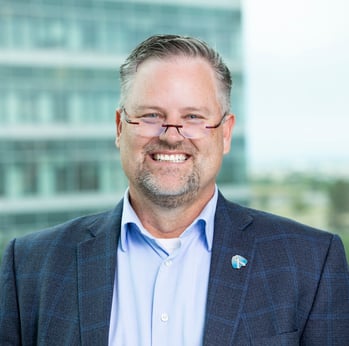 Jamie Studts, PhD Jamie Studts, PhD |
CU Cancer Center members are working on several projects around cancer prevention, including initiatives to help people to stop smoking, eat healthier, exercise more, protect themselves from the sun’s harmful rays, reduce exposures to carcinogens, and get vaccinated against viruses that cause cancer.
“Prevention is a vital and underutilized piece of the cancer puzzle,” says Jamie Studts, PhD, co-leader of the Cancer Prevention and Control Program. “Sometimes behavior change can be hard. But whether it’s changing your diet, increasing your physical activity, applying sunscreen, or reducing other kinds of risks and exposures, it’s the hard stuff that can be very effective.”
Prevention efforts at the CU Cancer Center include an ongoing human papillomavirus (HPV) Education and Patient Navigation Project at the Office of Community Outreach and Engagement (COE), focused on helping parents of adolescents and young adults make informed decisions about the HPV vaccine. HPV is responsible for more than 90% of cervical cancers, which account for more than 14,000 new cancer diagnoses each year in the U.S.
The COE also distributes free radon tests so families can test their homes. After smoking, radon is the second leading cause of lung cancer deaths in the United States, claiming about 21,000 lives each year in the U.S. and more than 500 in Colorado, according to the Colorado Department of Public Health and Environment.
In addition, the COE also is embarking on a new project in collaboration with Park County and a nine-county region in southeast Colorado that has high smoking prevalence to disseminate a novel smoking cessation program delivered via a smartphone app. The program includes education and cessation strategies for tobacco use and vaping and will be free to residents in these counties.
Goal 2: Detect Cancer Early
Early detection of cancer plays a vital role in improving cancer survival rates. Detecting cancer early allows for timely intervention, stopping the cancer before it metastasizes, and increasing the effectiveness of treatment options.
At the CU Cancer Center, many members are focused on detecting cancer early by providing greater access to screening and educating the community on options.
One of the most far-reaching and impactful CU Cancer Center programs for detecting cancers early is the Colorado Cancer Screening Program, a statewide initiative that partners with safety net hospitals and clinics to offer no-cost patient navigation services for cancer screening to the medically underserved of Colorado.
“A colonoscopy is great if you can get one, but there are barriers to access, there’s mistrust in the medical system, there are many who don’t have medical homes and maybe aren’t as comfortable navigating the system,” says CCSP director Andrea Dwyer. “These are things we have to address if we’re going to catch cancer early.”
Dwyer notes that there’s amazing potential for multi-cancer detection tests that scientists are working to develop, “but we have to approach this the right way,” she says. “It’s still very early days, and these tests are still very much in development. They’ll be fantastic if they work, but we’re also at a place where there’s mistrust in science. We have to make sure that we at the CU campus are contributing to science in a meaningful way.”
Goal 3: Develop Effective Treatments
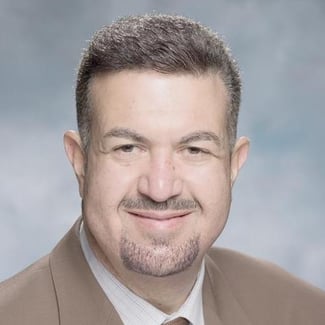
Hatim Sabaawy, MD, PhD, MS |
Hatim Sabaawy, MD, PhD, MS, associate director of translational research and the Margaret and Hugh Stapp Endowed Chair for Cancer Research, led the CU Cancer Center’s recent Pancreatic Cancer Retreat, in which cancer researchers from around the country came to the CU Anschutz Medical Campus to learn about new methods of detecting pancreatic cancer early, as well as clinical trials focused on improving immunotherapy for pancreatic cancer and using new technology to get a more accurate picture of the types of cells that make up a tumor.
It’s all part of the CU Cancer Center’s mission to develop effective treatments for patients with cancer — a mission that aligns with the National Cancer Plan.
“The future of cancer is all about using technology to provide better care and develop more precise diagnosis, more precise therapies, combination therapies, and ultimately, molecularly driven cancer prevention strategies,” Sabaawy says. “It’s going to be all about teamwork, working with other institutes, pharma, and even molecular diagnostic companies to get to that goal of providing better treatments.”
Chris Lieu, MD, associate director of clinical research at the CU Cancer Center and the Sohrab Amini, MD, FACS, Endowed Chair in Pancreatic Cancer Research, has seen treatments grow more effective over the past decade, especially those that replace traditional therapies that can come with serious side effects.
“We want to move away from chemotherapy and toward immunotherapy,” he says. “We want drugs that work better against cancer, but we also want drugs that aren’t as toxic as the drugs we’re using now.”
At the CU Cancer Center, much of that work happens in partnership with the nearby Gates Biomanufacturing Facility, which creates genetically modified T cells to fight cancer.
“That’s the next frontier: harnessing the immune system to fight cancer more effectively,” Lieu says. “We’re in the early stages of this technology. It has already shown effectiveness in blood cancers like lymphoma, but we haven't made a dent yet in solid tumors. But we’re starting to see studies come through that utilize this technology for all types of cancer.”
Goal 4: Eliminate inequities
Throughout the CU Cancer Center, work is being done to eliminate disparities that prevent underserved communities — including specific racial or ethnic groups, those who live in rural areas, people with disabilities, and sexual and gender minorities — from receiving adequate education, screening, and treatment for cancer. Those efforts include research that studies cancer in underserved groups, projects to reduce smoking in rural communities, and concerted efforts to make sure clinical trials enroll participants from a variety of populations.

Cathy Bradley, PhD |
“We can’t cure or greatly reduce the burden of cancer without addressing inequities, and what we learn from reducing inequities benefits all of us,” says Cathy Bradley, PhD, deputy director of the CU Cancer Center and the Paul A. Bunn, Jr. Endowed Chair in Cancer Research. “We don’t want one segment of our population doing well, and everyone else doing poorly.”
The NCI’s strategies for eliminating inequities include studying the causes of inequity in the number of cancer cases and deaths; engaging communities in cancer education; promoting structural changes that increase prevention and early detection; improving health literacy; and supporting strategic efforts to increase representation of all populations in cancer research.
All are areas in which the CU Cancer Center is already engaged, Bradley says. For example, the Rural Cancer Advisory Board is a group of nine women from rural backgrounds who provide insight, feedback, and recommendations to cancer researchers from a rural patient and caregiver perspective. And a set of five studies, launched in 2020, focuses on addressing disparities in care and outcomes for Black and Hispanic communities in Colorado. They include increasing representation of underserved populations in head and neck cancer clinical trials, working to better understand how the effects of advanced lung cancer treatments vary in patients based on racial or socioeconomic status, and increasing access to genetic cancer screening.
“The cancer center is attacking the issue from every angle possible,” Bradley says. “In our Cancer Prevention and Control program, we have a crosscutting theme of eliminating disparities across every single one of our initiatives. Most of our researchers have studies focused on disparities. We also have the Office of Community Outreach and Engagement, which goes into underrepresented communities not only to inform them about the research that we’re doing, but also to get information from them about what’s important to them.”
Goal 5: Engage every person
Clinical trials are an important part of cancer care, giving people with cancer potentially life-saving early access to new medications and treatments and making sure those medications and treatments are safe and efficacious before approving them for widespread use.
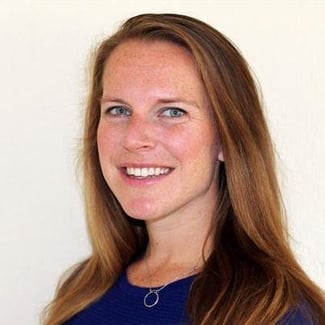
Jessica McDermott, MD |
But until recently, little thought was given to how to make clinical trials equitable so that everyone has access to them. It’s an area in which the CU Cancer Center is investing time, money, and energy, says Jessica McDermott, MD, deputy associate director for diversity and inclusion in clinical research.
“Not too long ago, there wasn’t a lot of thought put into, ‘How can we make this trial more inclusive? How can we make it more feasible for patients to enroll in?’” she says. “We want to make sure we’re not harming anyone, but sometimes if you put too many strict guidelines on who can be involved, that ends up excluding a lot of people.”
CU Cancer Center researchers are paying attention to exclusion concerns and similar issues as they design new clinical trials, looking to eliminate transportation barriers, for example, by finding ways to get blood draws and vital signs taken at home. They also are providing patients with more education about what clinical trials are and how they can get involved.
It's an initiative that’s right in line with the NCI’s goal of engaging every person in clinical trials and other types of cancer research.
The Cancer Clinical Trials Office at the CU Cancer Center has built a team of nurse navigators who work with trial participants, including a Spanish-speaking navigator who helps Spanish-speaking patients get enrolled. They also work to keep patients involved in a trial once it starts, helping with such issues as transportation, housing, and taking time off work.
Goal 6: Deliver optimal care
It’s no surprise that delivering optimal care is on the list of cancer goals created by the NCI, which points out that “important advances in early cancer detection, treatment, and survivorship care may be hindered by issues related to delivering high-quality cancer care. Issues include financial toxicity, the increasing cost and complexity of treatment, and disparities caused by barriers that prevent people from getting timely, culturally appropriate care.”
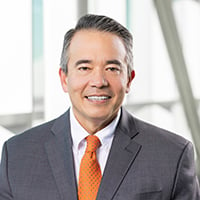
Richard Schulick, MD, MBA |
That’s why the CU Cancer Center is increasing its outreach to rural and Hispanic populations in Colorado, and it’s why the COE has created a Community Advisory Council (CAC) that works to close the gap in health disparities and reduce the incidence and mortality rates from cancer and other diseases. The CAC engages with community members across the state to improve knowledge and awareness of cancer risk factors, screening services, and treatment options. Its membership includes representation from the Colorado Department of Public Health and Environment, the Colorado Cancer Coalition, Colorado Alliance for Health Equity and Practice, Centro Humanitario, Center for African American Health, and the Colorado Black Health Collaborative.
In another effort to deliver optimal care, the CU Cancer Center also offers multidisciplinary clinics, where patients are seen by doctors from multiple specialties — including surgical oncologists, medical oncologists, radiation oncologists, pathologists, dietitians, and genetic counselors — all at the same time.
“You can have all the methodologies and techniques in the world for treating patients, but if you don’t deploy them appropriately, or give them in the right sequence in the right patient, then you’re not really using all the resources available,” says CU Cancer Center director Richard Schulick, MD, MBA, the Aragon/Gonzales-Giusti Endowed Chair in Surgery.
Goal 7: Maximize data utility
The NCI knows that big data and artificial intelligence are groundbreaking tools for cancer researchers, which is why the agency includes maximizing data utility as one of its cancer goals.
The NCI touts new software tools that are revolutionizing how data is collected, organized, and used for biomedical research. This includes machine learning algorithms that can identify patterns in large, complex datasets and evaluate the likely outcomes of different treatments.
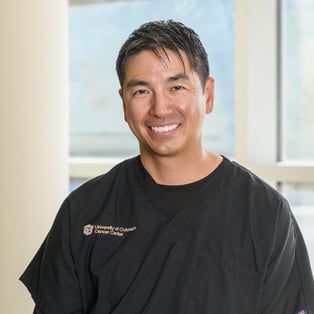
Chris Lieu, MD |
“Is there a way we can leverage all this data we’ve collected over the past two decades from sequencing cancers and analyzing tumors?” says CU Cancer Center member Chris Lieu, MD, professor of medical oncology. “If we have these big data sets and we have the advent of more usable artificial intelligence, can we start to combine some of the technologies we have available with these big data sets? There might be ways to use those big pieces of information to start to treat patients more individually.”
Data-focused research projects at the CU Cancer Center include an effort in the COE to create an interactive data platform to give researchers information on Colorado’s demographics, cancer burden, risk factors and health behaviors, environmental factors, and access to care across the cancer continuum.
In the Colorado School of Public Health, meanwhile, CU Cancer Center Deputy Director Cathy Bradley, PhD, and associate professor Marcelo Perraillon, PhD, co-director of the Population Health Shared Resource, with the support of an R01 grant from the National Cancer Institute, have created another resource for cancer researchers by linking the Colorado All-Payers Claims Database (APCD) with the Colorado Central Cancer Registry. APCD contains information on most payers in the state and offers a novel source of data to compare cancer treatment by insurance and plan at the population level.
Goal 8: Optimize the workforce
“Developing and maintaining a robust, stable, and diverse biomedical workforce requires collaboration and investment across many organizations, including research universities, professional societies, philanthropic foundations, private industry, and the federal government to train and support this and the next generation of scientists,” the NCI says on its website.
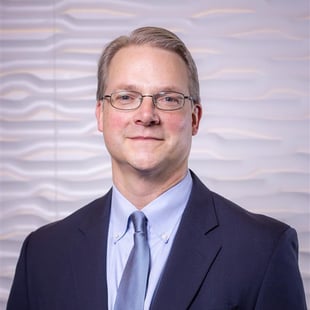
Wells Messersmith, MD |
Optimizing the workforce is a goal shared by the CU Cancer Center, which has in place a number of pipeline programs designed to expose students of all ages and backgrounds — including middle school and high school students, college undergraduates, and current medical students — to the world of cancer science and research, with a special focus on giving students from underrepresented backgrounds the opportunity to see themselves working in the field.
The pipeline programs are just one way in which the CU Cancer Center is working to build a diverse and equitable workforce, an effort that also includes recruiting fellows from diverse backgrounds, ensuring a positive experience for residents and interns, creating opportunities to recognize faculty members for their work, and providing mentorship and mental health support for trainees, says Wells Messersmith, MD, associate director of clinical services.
“Each step of the way, from middle school onward, we’re trying to create a vigorous pipeline of talent coming into the field that we can recruit from so that we can have as diverse a workforce as we can,” he says.



.png)